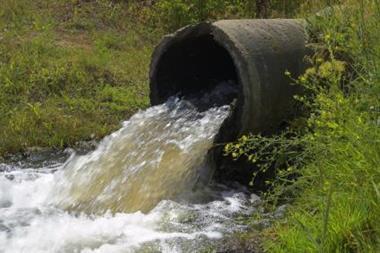Every year, traffic accidents around the world cause about 1.2m fatalities and 50m injuries. But there are other victims, say Monika Gruber and Marion Schwehr, as insurers are becoming
The fourth UN Climate Report published in 2007 estimated that about 1.6m people die each year as a result of inhaling soot and toxins. According to the World Health Organisation (WHO), air pollution is responsible for the premature death of more than two million people every year, half of them from developing and threshold countries.
Both figures may be considered conservative estimates and road traffic plays a significant role. Environmental and health impairment resulting from the use of automobiles includes paving over of valuable land, damage to forests, eutrophication of rivers and lakes due to nitrogen oxide affecting the natural ecological balance, and the emission of greenhouse gases, especially the release of CO2.
Car manufacturers have found themselves confronted with liability claims based on environmental damage. While an effective system of motor vehicle liability insurance has made it pointless to lodge claims for the costs of traffic accidents against vehicle manufacturers, it is still unclear what role the law of torts may come to play in holding drivers, manufacturers, motor vehicle insurers and fuel producers liable for health and environmental impairment.
Impact on health and the environment
Carbon monoxide, nitrogen oxides, sulphur dioxide and particulates are the vehicle emissions that most endanger health. These emissions can trigger a broad range of acute and chronic diseases, most commonly inflammation of and damage to respiratory organs, in turn leading to impaired lung function or asthma. In Mexico City, more than 80% of the air pollution can be attributed to the transport sector. In New Delhi it is just under 70%.
While these emissions have direct effects on people and the environment, the emission of CO2 causes damage indirectly – through the consequences of global warming. The quantity of CO2 emitted is directly related to fuel consumption, which, given the forecast increase in the number of vehicles around the globe, may be expected to increase significantly. It is currently estimated that there are more than 800m motor vehicles in the world. This figure is expected to rise to 1.6-1.8bn vehicles by 2030 and to more than 3bn by 2050. Unless low-consumption vehicles are quickly introduced, this growth will lead to an increase in worldwide fuel consumption and a consequent increase in CO2 emissions. The transport sector now causes about 20% of the world’s total CO2 emissions, of which about 70-80% (4,400 megatonnes) are attributable to road traffic. The present level is expected to double by the year 2050.
Costs connected with road traffic are caused by accidents, through the normal operation of vehicles (health and environmental costs, traffic jams), and through providing and maintaining the requisite infrastructure.
The last of these entails enormous financial and logistical expense and effort. Various studies have concluded that 2-2.5% of the value of a road should be invested each year in its maintenance.
Liability for personal accident and property damage resulting from traffic accidents can be covered by effective systems of motor liability insurance. In the USA, additional indemnification is sometimes also paid via manufacturer’s liability, but such covers are occasionally exhausted because some states have very low limits for compulsory motor liability.
“Victims of environmental damage have been trying to hold automobile manufacturers liable
For some time, victims of environmental damage have also been trying to hold automobile manufacturers liable for damage resulting from the normal operation of vehicles. In September 2006, the state of California sued several automobile manufacturers on the grounds that carbon dioxide emissions were damaging the state, its environment and economy and impairing the health and welfare of its citizens. The state therefore wanted the manufacturers to pay damages for flooding and other climate-related natural catastrophes. A year later, the suit was dismissed due to the difficulty of demonstrating the causal connection.
Even if it can proved with the aid of statistical analyses that the transport-related emission of greenhouse gases is partially responsible for climate change, there is still no proof that specific natural catastrophes can be attributed to climate change. Against this backdrop, future lawsuits seem for the time being to offer little prospect of success.
In the shadow of the US climate case, a decade-long legal dispute over exhaust-related illnesses came to an end in Japan. In 1996, asthma-sufferers in Tokyo brought a suit before the Tokyo District Court, because they held diesel vehicles to be partially responsible for their illness. In August 2007, more than 500 asthma sufferers accepted a conciliation proposal from the Supreme Civil Court, according to which seven automobile manufacturers were to pay the plaintiffs €7.7m. An additional €21m is being paid for a health plan over five years.
Several studies conducted in Sweden, Greece and UK have already demonstrated the causal connection between inhaled diesel exhaust, and acute inflammatory processes in the lungs that can give rise to diseases such as asthma. It remains to be seen how many lawsuits will follow.
Will premiums rise?
The consideration of climate-related and environment-related aspects is gradually becoming a leading issue in new pricing criteria for motor liability insurance. Until now, the insurance industry has based the pricing of motor insurance in most countries on criteria that reflect only the risk of accident – pricing reflects both the vehicle’s safety standards and personal risk criteria. Environmental pricing criteria are largely ignored.
In addition to including pollutant classes in the pricing catalogue, it would be conceivable to institute an individually graduated excise tax on all vehicle holders. The revenues from this could be made available to a fund for financing projects to improve air quality or pay the medical care of persons suffering from the effects of exhaust or noise. Finland and Slovakia already have such a government-regulated system for loss prevention, in which a surcharge on motor liability insurance is used to finance traffic safety measures. The introduction of an analogous system to help pay for the climate and environmental consequences of road traffic would appropriately reflect the current environmental discussion.
Some motor insurers are already offering an emission reduction certificate to ‘neutralise’ the owner’s CO2 emissions. This measure is not compulsory, however, and may be seen as a kind of donation to climate protection. The income is invested in projects to improve air quality and strengthen climate protection. In rare cases, companies are also granting premium discounts depending on the insured vehicle’s CO2 emissions, pollutant class and propulsion type. Ideas and measures of this type represent some initial steps toward integrating environmental criteria in motor insurers’ pricing systems.
Postscript
Monika Gruber and Marion Schwehr are consultants in the risk, liability and insurance department of Munich Re, www.munichre.com




















No comments yet